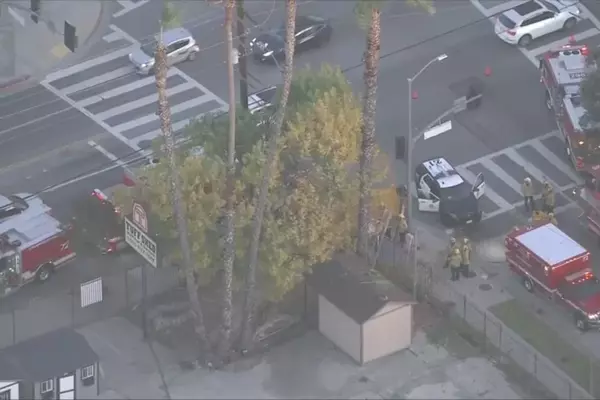
Make-or-break moment in the war sees frontline reports ranging from ‘upbeat to gloomy’
Ukraine’s long-awaited counter-offensive against Russian forces aimed at retaking swathes of territory captured since the war began last February appears to be ramping up, with results so far decidedly mixed.
- SEE MORE Cradle to Kremlin: how Putin’s childhood casts a shadow
- SEE MORE Ukraine counter-offensive: do attacks inside Russia jeopardise West’s support?
- SEE MORE What is the Wagner Group? The mercenaries offering ‘muscle to dictators’
After the Kremlin’s shock invasion failed to deliver the quick victory many expected, Ukrainian forces have successfully halted Russian fighters and then begun to push them back. Now, after months of preparation, the war has entered a make-or-break moment.
“Military campaigns are rarely all or nothing, but this one comes close,” said The Washington Post.
What does it involve?
In some ways, said BBC News’s Paul Adams from Kyiv, the counter-offensive has “already been under way for weeks”, with Ukraine conducting long-range artillery and missile attacks on key Russian targets far behind the front lines.
Unlike last autumn’s lightning offensive in the south and east, which caught Russia off guard and reclaimed huge chunks of territory, “the start of the spring battle appears to consist of probing attacks to fix Russian forces in place”, said Foreign Policy. “But given the sheer size and scope of Russian fortified positions, Ukrainian troops have a tough nut to crack before they can take another bite of occupied territory.”
Initial attacks appear designed to get Russia to commit its limited reserves, setting the conditions for larger battles on Ukrainian terms, said Jack Watling, a senior research fellow at the London-based think tank the Royal United Services Institute.
As has been the case for much of the war, fighting continues to be focused around the symbolically important town of Bakhmut, described as Ukraine’s Stalingrad, in reference to the defining battle of the Second World War that turned the tide decisively against the Nazis.
In truth, “the full shape of Ukraine’s plans is yet to become clear”, suggested The Economist.
“We haven’t committed our main forces, and the Russians haven’t committed their main forces,” a source in Ukraine’s general staff confirmed to the newspaper. Both sides were so far involved in a “chess game” to draw out each other’s reserves, they said.
What will Russia’s response be?
For all the Kremlin’s denials, the BBC said it “seems highly likely” Russian forces did blow up the Nova Kakhovka dam last Tuesday, flooding 230 square miles either side of the Dnipro River and “taking one of Kyiv’s military operations off the table”.
Rather than a one-off, this appears to be a coordinated strategy, with Ukraine blaming Russia for blowing up a second dam on the Mokri Yaly River in a bid to obstruct Kyiv’s ongoing counter-offensive in the south, The Guardian reported.
The battle in the air, where Russia enjoys a clear advantage, is also “key”, said The Economist, particularly the use of reconnaissance and strike drones.
The UK Ministry of Defence has claimed Russia is receiving larger consignments of drones from Iran, while there are unconfirmed reports they have also acquired significant numbers of Chinese drones.
At the same time, Russian forces continue to target Ukrainian civilians in the hope of weakening morale.
#RussiaIsATerroristState#Russia killed at least three people and injured 25 more in attack on a residential building in Kryvyi Rih last night.
— MFA of Ukraine 🇺🇦 (@MFA_Ukraine) June 13, 2023
There are people under the rubble, the rescue operation continues. pic.twitter.com/J67X3BiqdD
How likely is it to succeed?
It may be just a week in but already reports from the frontlines range from “upbeat to gloomy”, said The Economist.
There may have been some initial progress for Ukrainian forces in the Donetsk region and around Bakhmut, but Antony Blinken, the US secretary of state, said on Monday it was still too soon to say exactly where Ukraine’s counter-offensive was going.
The stakes, however, could not be higher. If Ukraine is able to force back an already shaky Russian army, “it stands a chance of forcing Moscow to bargain for an end of its failed invasion”, said The Washington Post. “But if Ukraine fails, it would be a bitter blow to the country’s weary population and could endanger continued support from some restless NATO members.”
Senior US officials are “convinced that future support for the Ukraine war – and President Joe Biden’s global reputation – hinges on the success of Ukraine’s counteroffensive”, Politico reported.
Succeed and Western military and economic aid will continue to flow. Anything less than clear gains on the battlefield and – with Republican lawmakers already unsure of committing further funding and anxiety growing in Washington over an escalation of the war on to Russian territory – support could dry up.







